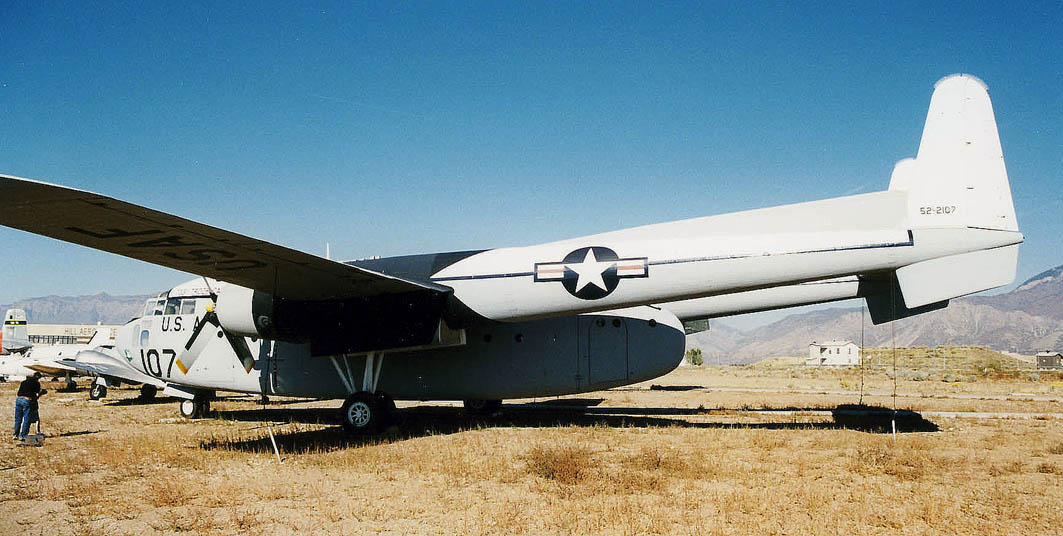
Fairchild C-119
 |
| C119F N15509 is preserved in USAF markings at Hill Aerospace Museum north of Salt Lake City in the US |
| The C-119 Flying Boxcar was developed by Fairchild in 1947
as an improved version of the C-82. The XC-82A prototype differed mainly in having the flight deck repositioned into the nose of the aircraft, instead of above the front cabin, and the installation of two 2,650hp Pratt and Whitney R-4360-4 Wasp Major 28-cylinder radial engines. It was ordered into production as the C-119B, with 55 being built. There was space for 62 fully-equipped troops and the type served throughout the Korean and Vietnam wars, as well as with numerous other air arms around the world. Main production versions were the C-119F (212 built) and C-119G (480), while the AC-119G and K were dedicated gunships for operation in South East Asia. The YC-119K featured two underwing 2,850lb General Electric J86 turbojets to boost take-off and this idea was incorporated on the C-119K and AC-119K variants. Other jet conversions were that developed by Steward-Davis Inc of California, featuring a 3,400hp Westinghouse J34 engine on the upper fuselage, and a HAL conversion for the Indian Air Force with more powerful Orpheus jets. The type was adopted by several aerial fire fighting companies in the US, including Hawkins and Powers and Hemet Valley Flying Service, but the type was withdrawn in the early 1980s due to safety concerns. Another unusual development was the unique XC-120 Packplane, which saw a C-119B conveted to carry a detachable fuselage pod, rather like Thunderbird 2 in The Thunderbirds TV series. At least one aircraft remains potentially airworthy in Alaska, while many more are derelict at Hawkins and Powers base in Greybull, Wyoming. |
| Contents | Photos | Census | Update |